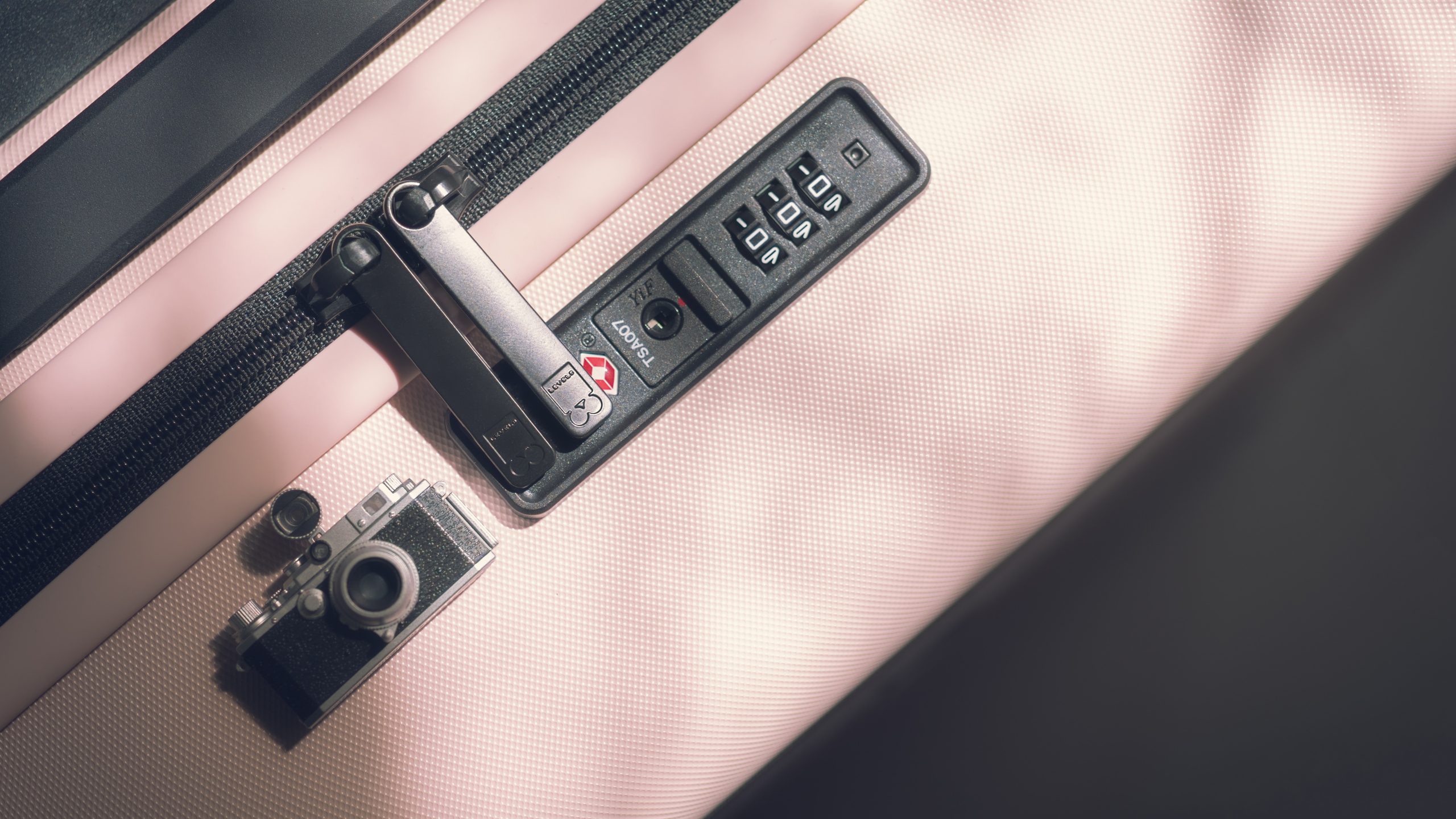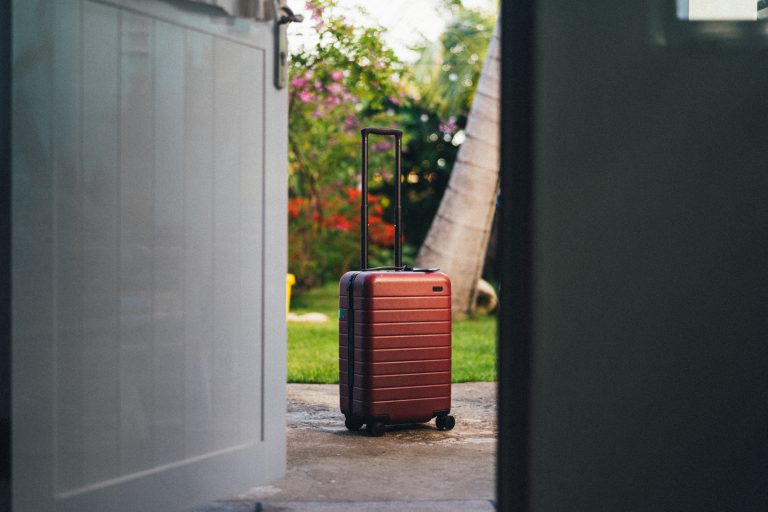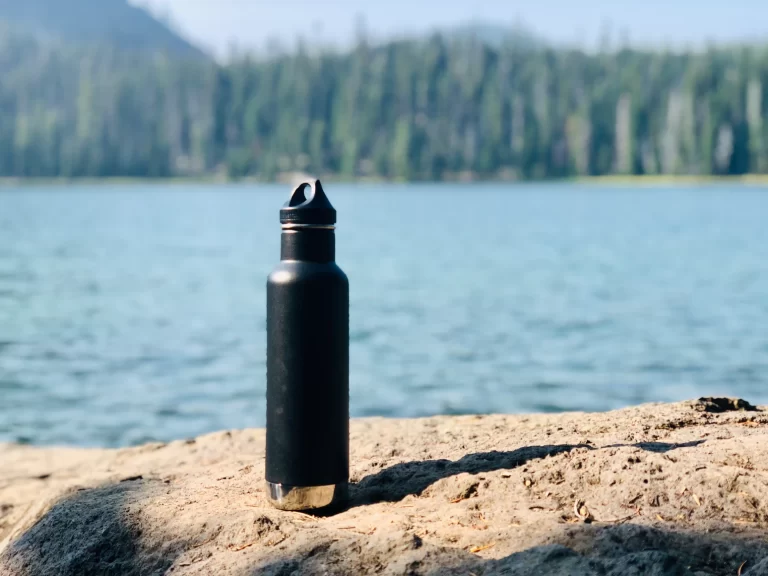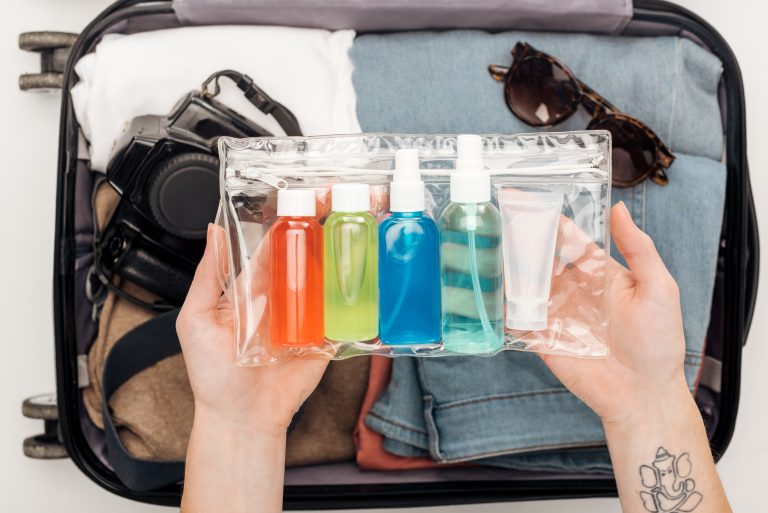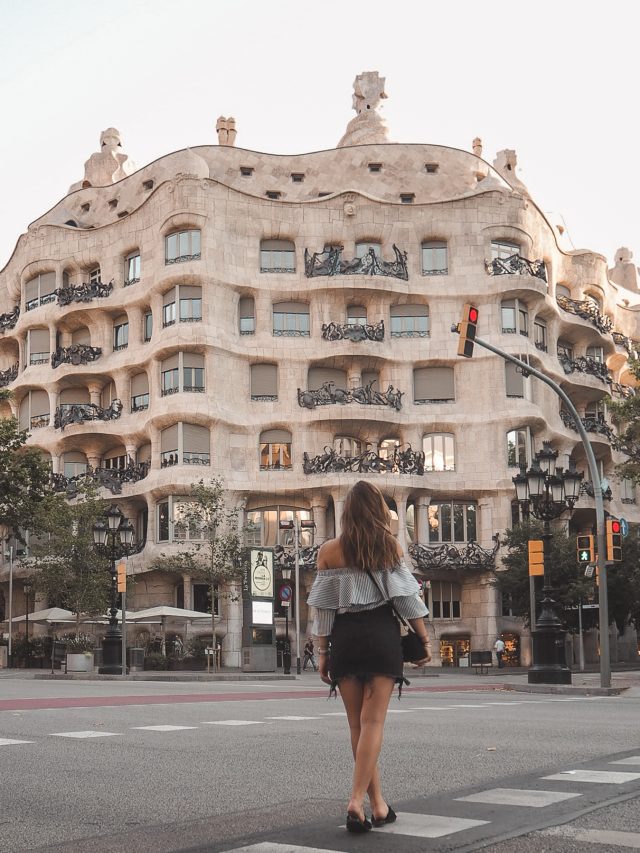How Much Liquid Can You Take On A Plane In Checked Baggage
The general rule is – if you check in your baggage, there will be no limit on the number of liquids you can bring, as long as they are not flammable or hazardous.
But there are some exceptions to this rule that you will have to consider when you pack your belongings for your next flight.
I’ll explain them below.
General Rule
According to TSA regulations, you can bring fluid products such as drinks, creams, gels, aerosols, and other similar items, in quantities that exceed 3.4 ounces (100 ml) as long as you place them in the checked baggage and they don’t present any type of public danger and follow the airline weight policy per luggage.
Even if the container has a capacity of over 3.4 ounces but the liquid inside it is less than this amount, you will still have to place it in the checked luggage.
All your products in the checked baggage will be screened by the security officers.
Exceptions Of Liquids That Will Be Limited For The Checked Baggage
Alcoholic beverages
When it comes to alcoholic beverages, the concentration of alcohol in the bottle will make the difference.
If your alcohol is under 24% ABV, like most wines and beers, there’s no limit on the amount you can pack. For alcohol between 24% and 70% ABV, you can take up to 5 liters per person, but make sure it’s in unopened retail packaging. However, if the alcohol is over 70% ABV, it’s not allowed in either your carry-on or checked bags as it is highly flammable.
You also need to check import regulations of the country you are flying to.
Rubbing alcohol
Rubbing alcohol, isopropyl alcohol, is not allowed in unlimited quantities in the checked baggage either.
You can bring a maximum of 18 ounces of rubbing alcohol in each container.
However, rubbing alcohol tends to be a common product worldwide and it is usually easy to find in pharmacies at a decent price. So, it might not be worth it to bring it with you.
Aerosol checked baggage regulation
In total, one person can bring 70 ounces (two liters) of aerosol. These restrictions refer to all types of aerosol products from sprays to deodorants and other aerosol toiletries.
Flammable and hazardous items
These are chlorine liquid, flammable paints, flammable liquid fuel, gasoline, lighter fluid, and liquid bleach as well as other derivates of these substances.
Transporting any of these items in the checked baggage is prohibited, regardless of the quantity.
Cleaning supplies
Cleaning supplies are generally considered safe and they are allowed in the checked baggage as long as they are not flammable.
If you are not sure whether a cleaning product is flammable or not, check the product description. Flammable products have a sign that indicates this property.
For those products that you might have doubts about, check the manufacturer’s website to see if they are within the list of prohibited substances.
We recommend leaving the cleaning products in their original container so they can be identified easier during the scanning process.
There is also no liquid limit for such products either.
Sprays for self-defense purposes
You are allowed to bring only one spray per passenger (not per suitcase).
The spray container can’t be bigger than four ounces which are 120 ml of liquid.
Consequentially, tear gas sprays can’t have more than 2 % CN or CS inside of them. You will have to make sure that there is no possibility of its discharging by accident.
Such regulations apply to pepper sprays as well as other types of self-defense sprays.
Can I Bring Full-Size Cosmetics Such As Shampoo And Conditioner In The Checked Luggage?
If you don’t think 100 ml of shampoo will cover your entire trip, you can take a full bottle (or more) as long as you pack it in your checked luggage.
The same goes for any other toiletries that you might need while you are away from home.
What Happens If Security Finds Prohibited Items In Your Checked Baggage
To begin with, we recommend you never take such a risk because the consequences can be dire, depending on the type of the prohibited items you decide to add to your baggage and how dangerous they are.
But at times it can be an honest mistake.
In such a situation there are several different approaches the security officers could take, according to the type of prohibited item that they found.
Items that are not a danger to the public but are still not allowed in the checked baggage due to airline policy regulations, will simply be removed from the suitcase and tossed away.
For items that are more dangerous, such as flammable liquids, the TSA officer will generally call the airline security and even the police if there is a serious threat. And if there is a need for further investigation you will be informed.
An intervention of such magnitude could easily cause you to miss your flight and suffer other severe consequences so you don’t want to take the risk.
Note that the security officers usually just screen the bags and open them only in case something alarms them. However, independent of the screening, TSA agents have the authority to open any bag they find suspicious and check its content.
Locked suitcases should have a locker that is TSA-approved as the officers have special keys to open the locker without having to damage it. If your suitcase doesn’t come with a TSA-approved locker but it still needs to be checked, they will remove the locker by force, even if that means damaging it.
Liquid Norms For Checked Baggage In International Flights
Most flights, national and international respect the regulations mentioned above. However, it is important to be aware of the customs restrictions that might differ from one country to another, especially when you are planning to bring a few bottles of alcoholic beverages.
If your luggage doesn’t respect customs norms, you risk getting your items confiscated in the destination country, even if they pass the checking at your departure airport.
Some countries ban alcoholic items altogether such as certain Islamic countries. An example is Saudi Arabia. If you still want to bring some alcohol with you when you are traveling to these countries, you can check with the local authorities to see if there are any exceptions. But we recommend not taking the risk.
What Happens If Your Liquid Products Are not Accepted At The Destination
If you didn’t check the regulation that applies to the destination country, you might discover that you are not allowed to bring certain liquid products such as alcoholic beverages. Or, if you are allowed to transport them inside the country, the quantity is restricted, unless you have certain customs paperwork.
If you are in such a situation, there are several consequences that you might experience.
The prohibited products will be most likely confiscated by the customs authorities in the country you fly to. However, if you try to bring into the country a large number of prohibited products, you might become the subject of a local investigation and that will surely ruin your trip.
A fee might be included in this process and you will have to cover it at the customs office or a local authority that you will be guided towards.
Also, if you bring into the country products that are not prohibited but require an importation permit for the quantity that is found in your checked baggage, you will have to offer the paperwork to receive your goods.
Note that such unpleasant circumstances can happen even if your baggage passed the checking point at the airport of your departure. This is why it is mandatory to check the regulations that apply in the country that you fly in.
How To Pack Liquid Products In The Checked Baggage
When you pack your checked baggage, safety should be the main concern, followed by the objective of maintaining the good condition of your belongings.
You don’t want your containers to spill and stain other items in your suitcase.
There are containers made especially for traveling with liquids.
Make sure your bottles or jars are perfectly sealed and don’t present any leaking risk.
Also, choose a container made of plastic rather than glass so it will not break inside your baggage.
We also recommend putting all your liquids into a separate zip-lock bag or compartment inside your suitcase for safety reasons as well.
A Quart Bag is an excellent option to consider, especially the ones that are TSA-approved.
The size of a quart bag is 6 inches by 9 inches and it has a volume of one liter. And if you don’t use it for your checked baggage, it is ideal for your carry-on liquid items.
One of our favourite quart size zipper bags is this one by Olanmark. Another good option is this one by WANDF.
Surround your fluid items (if they are in a glass bottle) with clothes and other soft items so they have a cushion when the suitcase gets hit.
Also, don’t pack your bottle too close to each other so they don’t get hit easily. If your bottle is small enough, you can also put them inside your shoes. If you are packing bottles of wine or champagne, consider purchasing leaf-proof bottle shield bubble wrap such as this one.
Bubble wrap can be very efficient as well if you have some to wrap around your bottles.
Keep in mind that you will not be able to access the checked baggage past the checking point. So, all flight essentials should be in your carry-on bag.
Before you pack your liquid items, check if you can find the same or similar products at the destination, as well as the price you will find them for, and see if it is worth bringing them with you rather than purchasing them when you arrive.
It might not be worth it if you can simply buy the same products with the same amount of money, at your destination.
Plus, you’ll have a chance to try local products instead.
If you have any specific questions regarding your luggage, the type of liquids in checked baggage, or the liquid limit, you can ask the @AskTSA on Twitter, and most often they will offer you a straight answer.
And always check the rules of the airline you will be flying with as well as the customs of your destination country to make sure your checked baggage respects both.
Safe travels!
